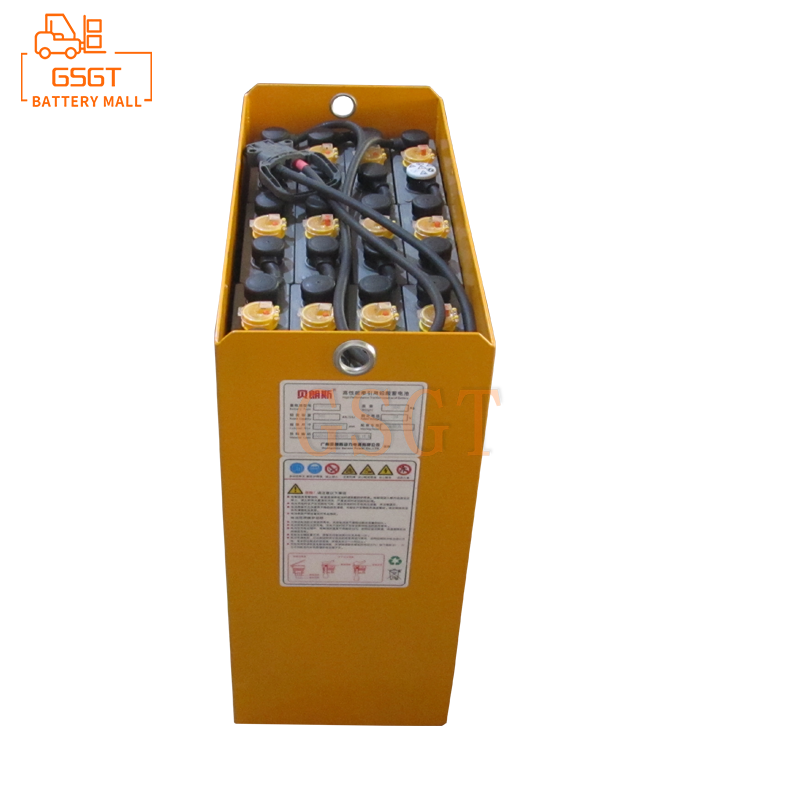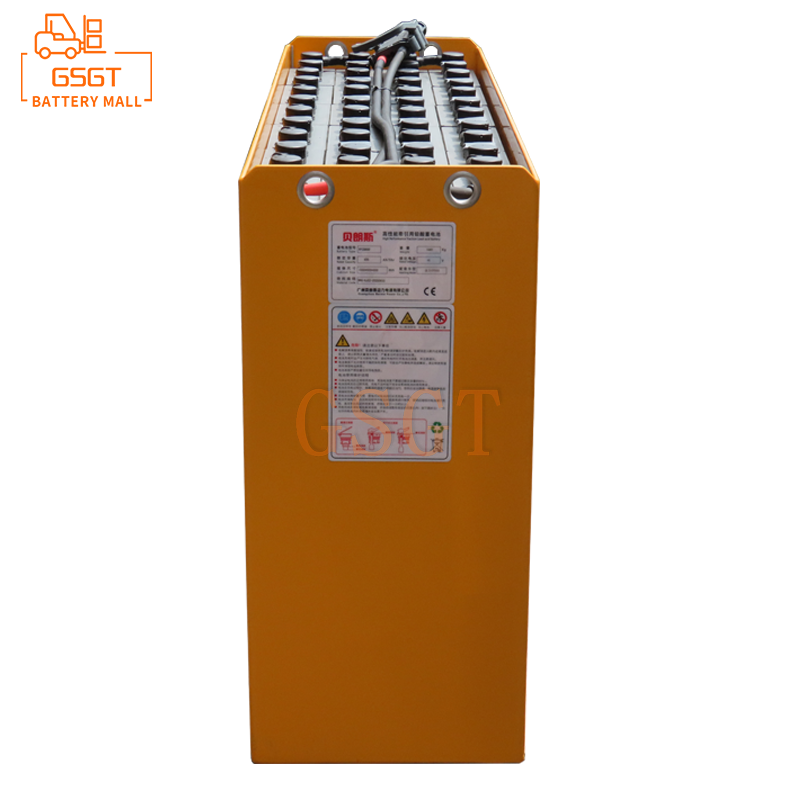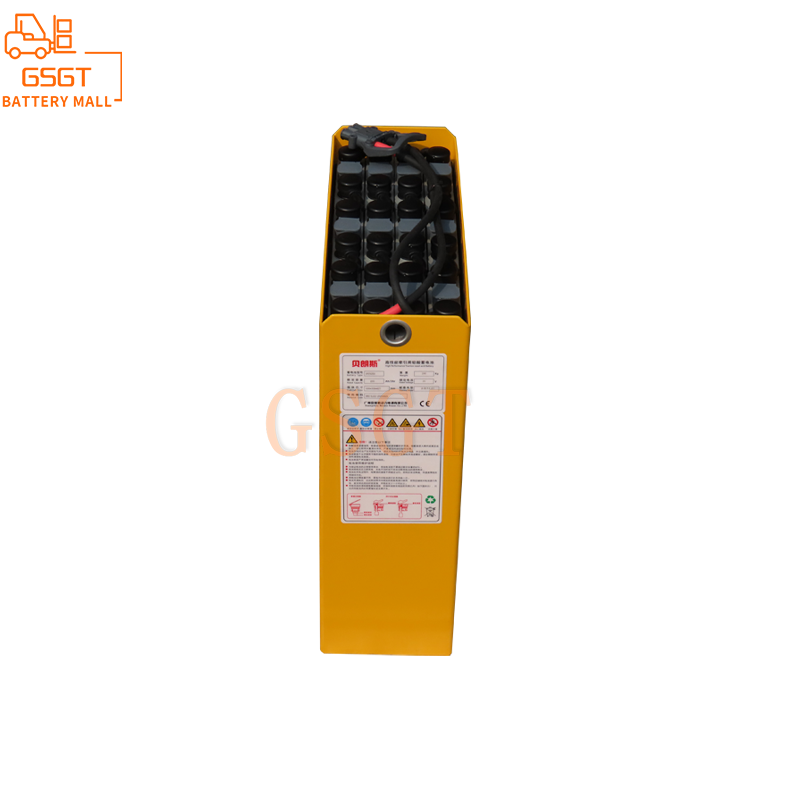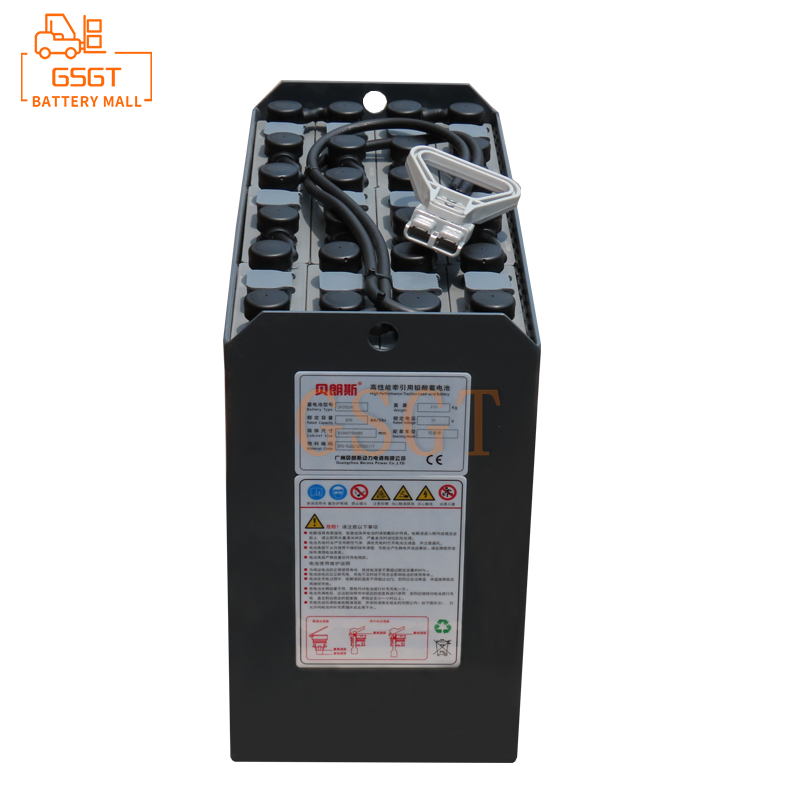Time:2025-07-09 10:36:25
Browse:630
In modern logistics and warehousing operations, forklifts, as key handling equipment, the performance and lifespan of their power source - lead-acid batteries - have drawn much attention. The depth of discharge of lead-acid batteries, as an important factor affecting their service life, has always been a core concern for forklift users and maintenance personnel. A thorough understanding of the relationship between the depth of discharge and battery life is of great significance for improving the operational efficiency of forklifts and reducing operating costs.
1. Working Principle of Lead-Acid Batteries and the Concept of Discharge Depth
Lead-acid batteries convert chemical energy into electrical energy through chemical reactions. During the discharge process, lead dioxide (PbO₂) at the positive electrode and lead (Pb) at the negative electrode react with sulfuric acid (H₂SO₄) in the electrolyte to form lead sulfate (PbSO₄) and water. This process releases electrons, generating a current that powers the forklift.
Depth of Discharge (DoD) refers to the percentage of the amount of discharge from a battery to its rated capacity during use. For instance, for a battery with a rated capacity of 100Ah, when the discharge reaches 50Ah, its depth of discharge is 50%. The depth of discharge directly reflects the degree of power consumption of a battery during one use.
2. How does the depth of discharge affect the lifespan of lead-acid batteries
(1) Impact on the plates
When lead-acid batteries are over-discharged, that is, when the depth of discharge is too large, the active material on the plates will undergo significant changes. The amount of lead sulfate produced on the plates increases, and these lead sulfate crystals tend to grow larger and are unevenly distributed. These large-grained lead sulfate crystals are difficult to fully convert back to their original active material during charging. Over time, this will lead to a reduction in the effective active material on the plates, causing them to gradually corrode and thereby affecting the battery's capacity and lifespan. For instance, in some forklift application scenarios where deep discharge is frequent, after being used for a period of time, it will be found that the surface of the plates becomes rough and the color changes. This is a manifestation of the plates being damaged due to the depth of discharge.
(2) Impact on the electrolyte
Deep discharge will significantly reduce the concentration of sulfuric acid in the electrolyte. When the concentration of the electrolyte is too low, its ability to participate in chemical reactions decreases and the internal resistance of the battery increases. An increase in internal resistance means that the battery will generate more heat during charging and discharging. This not only accelerates the evaporation and water loss of the electrolyte but also further aggravates abnormal chemical reactions inside the battery, leading to deterioration of battery performance and a shortened lifespan. In high-temperature environments, the impact of electrolyte problems caused by deep discharge on battery life is more pronounced.
3. Actual Performance of Battery Life at Different Discharge Depths
Through a large amount of experimental data and actual usage cases, it can be found that the depth of discharge has a very significant impact on the lifespan of lead-acid batteries. Generally speaking, when the depth of discharge is controlled at around 50%, the cycle life of lead-acid batteries can reach approximately 1,500 times. However, when the discharge depth increases to 80%, the cycle life may be shortened.
4. Q&A Session
(1) Q: Can lead-acid batteries maintain good performance as long as they are not deeply discharged?
Answer: Although avoiding deep discharge is very important for extending the lifespan of lead-acid batteries, the performance of the battery is still affected by many factors. For instance, whether the charging method is correct or not, if it is overcharged or undercharged for a long time, it will also damage the battery. In addition, the ambient temperature is also of vital importance. A high-temperature environment will accelerate the battery's water loss and plate corrosion, while a low-temperature environment will reduce the battery's charging and discharging efficiency and affect its actual capacity. Therefore, to maintain the good performance of lead-acid batteries, it is necessary to comprehensively consider multiple factors such as charging and temperature, not just controlling the depth of discharge.
(2) Q: When it is found that the capacity of the lead-acid battery of a forklift has decreased due to deep discharge, is there a way to restore it?
Answer: If it is a mild capacity drop caused by deep discharge, some methods can be attempted to restore it. For instance, the battery can be "activated" by charging and discharging it multiple times with a small current. Specialized battery repair equipment can also be used to decompose the lead sulfate crystals on the plates through techniques such as pulses, thereby restoring some of the active substances. However, if the battery is severely deeply discharged and the plates have suffered irreversible damage, the possibility of capacity recovery is relatively small. At this point, it may be necessary to consider replacing the battery with a new one.
5. How to Reasonably Control the depth of Discharge to Extend Battery Life
To extend the service life of lead-acid batteries in forklifts, it is crucial to control the depth of discharge reasonably. Forklift operators should develop good usage habits and pay close attention to the battery level display device of the forklift. When the battery level drops to a certain extent, such as 40% - 50%, they should arrange for charging in time to avoid over-discharging. Meanwhile, enterprises can formulate corresponding forklift usage management systems to standardize the charging and discharging of batteries. In addition, regular inspection and maintenance of the battery, including checking the electrolyte level, density, etc., to ensure that the battery is in good working condition, also helps to better control the depth of discharge and extend the battery life.
In conclusion, the depth of discharge of lead-acid batteries in forklifts has a crucial impact on their lifespan. By thoroughly understanding this influencing mechanism and taking reasonable control measures, the service life of batteries can be effectively prolonged, the operating costs of forklifts can be reduced, work efficiency can be improved, and a strong guarantee can be provided for the production and operation activities of enterprises.

$1105

$3810

$1270

$850

MESSAGE
Professional And Efficient
Security
Affordable Price
Professional Services